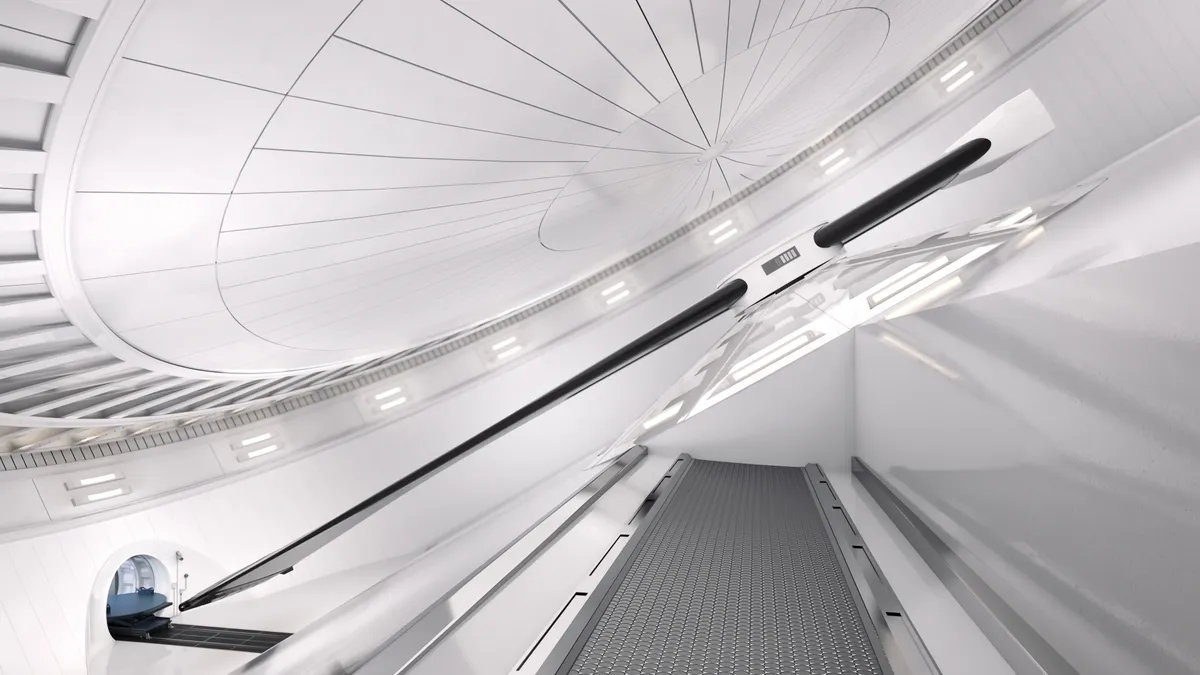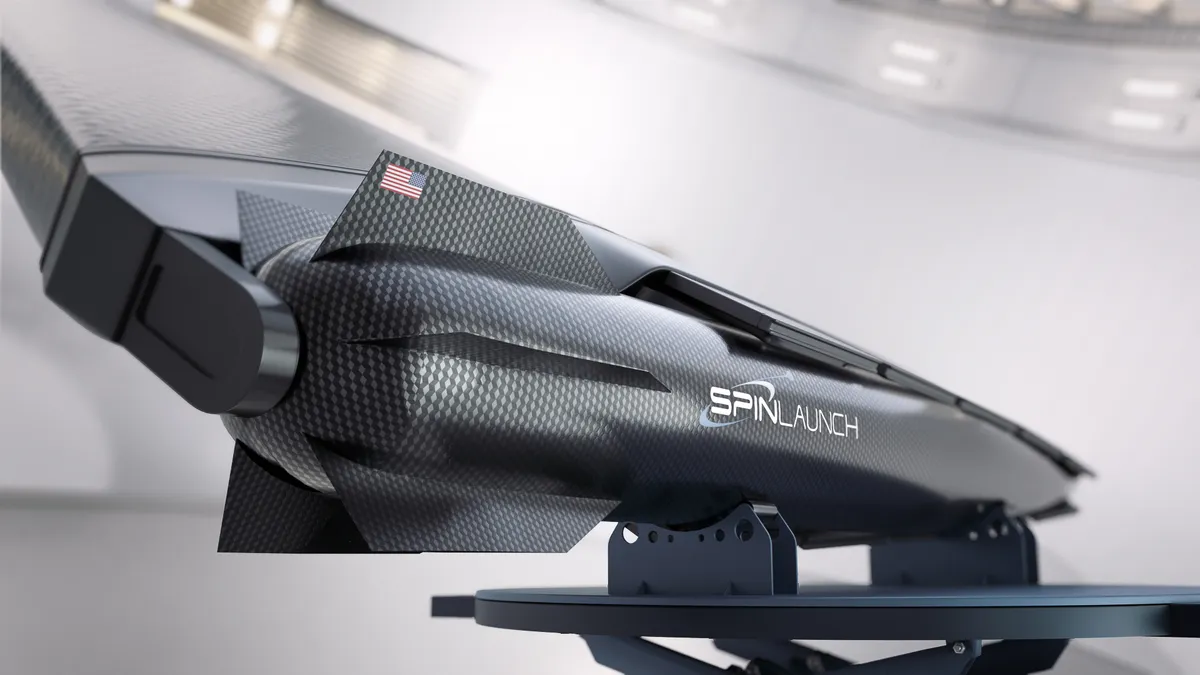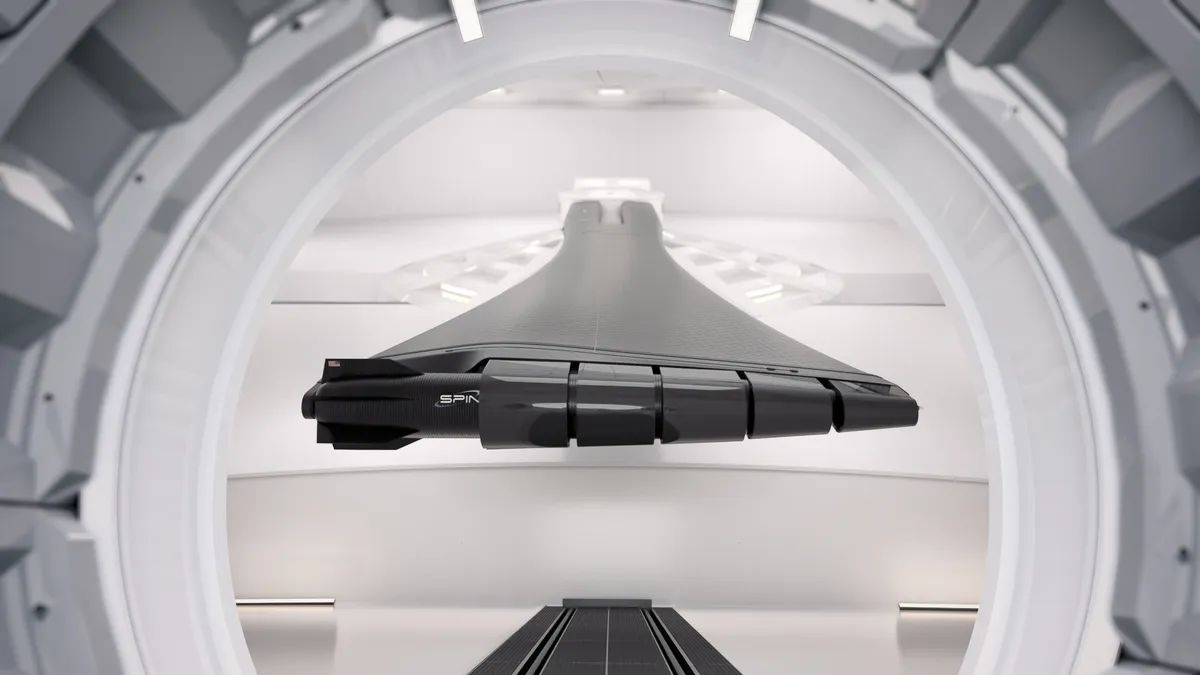NASA has teamed up with private spaceflight company SpinLaunch to trial a unique system designed to send satellites into space using a sling shot-like launcher.
The collaboration is part of NASA’s Flight Opportunities Program, which was set up more than a decade ago to discover innovative new space technologies, and could see the two organisations carrying out test flights later this year.
The system works by attaching a rocket payload onto one end of a giant spinning arm powered by electric motors, accelerating it to high speeds and then flinging it out into space.
As it is housed in a vacuum chamber with next to no air resistance, the arm can be accelerated to around 450 rotations per minute, allowing it to launch the payload through a chute mounted on the system's top at speeds of up to 8,000km/h - enough to send it into low Earth orbit.
The team say that the system will be much more cost effective and environmentally friendly that current rocket booster-based launch systems as it does not require the rockets to carry large amounts of fuel to take them up into the atmosphere.
In October last year, the SpinLaunch team carried out a successful test run of a scaled-down prototype of the system, the A33 Magnetic Orbital Accelerator, at Spaceport America in New Mexico.
They were able to launch a rocket payload thousands of metres into the air despite only running at 20 per cent of the maximum power.
The team now plan to further test the A33 Accelerator with payloads fitted with boosters that start firing when they reach the upper atmosphere, which will allow the satellites to be manoeuvred into the desired position once they are in orbit.
They have also started work on the L100 Magnetic Orbital Accelerator, a system based on the A33 only much larger. It will be constructed at an as-yet-undisclosed site somewhere along the US coastline and is scheduled to be fully operational by 2025.
“What started as an innovative idea to make space more accessible has materialised into a technically mature and game-changing approach to launch," said Jonathan Yaney, Founder and CEO of SpinLaunch. "We look forward to announcing more partners and customers soon, and greatly appreciate NASA’s continued interest and support in SpinLaunch.”
We have lift off!

The company successfully launched a 3-metre rocket from its A33 Suborbital Accelerator during a test flight at Spaceport America in New Mexico on October 2021. The rocket made it several thousand metres into the air despite the system only running at about 20 per cent of its full power, the team reported. The rocket can be seen as a faint speck near to the top of the photograph.
In a spin

The central chamber of the planned L100 Magnetic Orbital Accelerator (shown here in a CGI render) will be kept in near-vacuum conditions to make sure air resistance is kept to a minimum as the payload is accelerated. The chamber will measure 90m in diameter, nearly twice that of the A33's.
Pocket rocket

The team plan to fit the 3m-long rockets launched by the L100 (shown here in a CGI render) with internal boosters that kick in when they reach the upper atmosphere, allowing them to be manoeuvred into the desired position.
Locked and loaded

This CGI render of the inside chamber of the L100 shows the 100kg payload attached to the carbon fibre hypersonic tether that will accelerate it to speeds of up to 8,000km/h before flinging it out into space.
Read more about space: